Sampling and reconstruction
 The present paper deals mainly with seven fundamental
theorems of mathematical analysis, numerical analysis, and
number theory, namely the generalized Parseval decomposition
formula (GPDF), introduced 15 years ago, the well-known
approximate sampling theorem (ASF), the new approximate
reproducing kernel theorem, the basic Poisson summation
formula, already known to Gauss, a newer version of the GPDF
having a structure similar to that of the Poisson summation
formula, namely, the Parseval decomposition–Poisson summation
formula, the functional equation of Riemann's zeta function, as
well as the Euler–Maclaurin summation formula. It will in
fact be shown that these seven theorems are all equivalent to
one another, in the sense that each is a corollary of the
others. Since these theorems can all be deduced from each
other, one of them has to be proven independently in order to
verify all. It is convenient to choose the ASF, introduced in
1963. The epilogue treats possible extensions to the more
general contexts of reproducing kernel theory and of abstract
harmonic analysis, using locally compact abelian groups. This
paper is expository in the sense that it treats a number of
mathematical theorems, their interconnections, their
equivalence to one another. On the other hand, the proofs of
the many intricate interconnections among these theorems are
new in their essential steps and conclusions.
The present paper deals mainly with seven fundamental
theorems of mathematical analysis, numerical analysis, and
number theory, namely the generalized Parseval decomposition
formula (GPDF), introduced 15 years ago, the well-known
approximate sampling theorem (ASF), the new approximate
reproducing kernel theorem, the basic Poisson summation
formula, already known to Gauss, a newer version of the GPDF
having a structure similar to that of the Poisson summation
formula, namely, the Parseval decomposition–Poisson summation
formula, the functional equation of Riemann's zeta function, as
well as the Euler–Maclaurin summation formula. It will in
fact be shown that these seven theorems are all equivalent to
one another, in the sense that each is a corollary of the
others. Since these theorems can all be deduced from each
other, one of them has to be proven independently in order to
verify all. It is convenient to choose the ASF, introduced in
1963. The epilogue treats possible extensions to the more
general contexts of reproducing kernel theory and of abstract
harmonic analysis, using locally compact abelian groups. This
paper is expository in the sense that it treats a number of
mathematical theorems, their interconnections, their
equivalence to one another. On the other hand, the proofs of
the many intricate interconnections among these theorems are
new in their essential steps and conclusions.
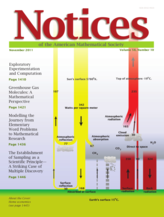 During the period 1928-1949, several engineers contributed
to the establishment of a sampling principle. They did this
virtually independently of each other in the context of
communications theory and practice. The question addressed in
this paper is the following: Why was the sampling principle the
subject of multiple discovery, spread over three continents?
The search for an answer led us to investigate the work of
Kelvin and Stokes on telegraphy and the emergence of the
concept of bandwidth limitation. Kelvin's law of squares and
the challenges of communications engineering played a role in
the matter, but the full story also involves people like
Nyquist, Kotel'nikov, Raabe, Shannon and Someya. Ironically,
"the crowding of the ether" that worried Kotel'nikov and others
in the 1940s is a problem as pressing today as it was 70 years
ago. Telecommunications, as a source of problems of theoretical
interest and practical importance, has not yet been exhausted.
During the period 1928-1949, several engineers contributed
to the establishment of a sampling principle. They did this
virtually independently of each other in the context of
communications theory and practice. The question addressed in
this paper is the following: Why was the sampling principle the
subject of multiple discovery, spread over three continents?
The search for an answer led us to investigate the work of
Kelvin and Stokes on telegraphy and the emergence of the
concept of bandwidth limitation. Kelvin's law of squares and
the challenges of communications engineering played a role in
the matter, but the full story also involves people like
Nyquist, Kotel'nikov, Raabe, Shannon and Someya. Ironically,
"the crowding of the ether" that worried Kotel'nikov and others
in the 1940s is a problem as pressing today as it was 70 years
ago. Telecommunications, as a source of problems of theoretical
interest and practical importance, has not yet been exhausted.
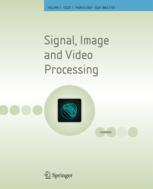 The problem of restoration in fluorescence microscopy
involves at the same time with blurring and photon noise. Their
combined effects corrupt the image by inserting elements that
do not belong to the real object and distort the contrast. This
hinders the possibility of using the images for visualisation,
recognition, and analysis using the three-dimensional data. The
algorithms developed to restore the lost frequencies and
perform band extrapolation, in general, assume noiseless data
or additive noise. This paper presents a restoration approach
through band extrapolation and deconvolution that deals more
effectively with the noise. It combines a constrained
extrapolation algorithm and the Richardson-Lucy iterative
algorithm. The results are compared with those obtained using
the original Richardson-Lucy algorithm and also regularised by
Total Variation. The extrapolation of frequencies is also
analysed, for both synthetic and real images. The method
improves the results since it yields better signal-to-noise
ratio and quality index values, performs band extrapolation,
and allows a better visualization of the 3D structures.
The problem of restoration in fluorescence microscopy
involves at the same time with blurring and photon noise. Their
combined effects corrupt the image by inserting elements that
do not belong to the real object and distort the contrast. This
hinders the possibility of using the images for visualisation,
recognition, and analysis using the three-dimensional data. The
algorithms developed to restore the lost frequencies and
perform band extrapolation, in general, assume noiseless data
or additive noise. This paper presents a restoration approach
through band extrapolation and deconvolution that deals more
effectively with the noise. It combines a constrained
extrapolation algorithm and the Richardson-Lucy iterative
algorithm. The results are compared with those obtained using
the original Richardson-Lucy algorithm and also regularised by
Total Variation. The extrapolation of frequencies is also
analysed, for both synthetic and real images. The method
improves the results since it yields better signal-to-noise
ratio and quality index values, performs band extrapolation,
and allows a better visualization of the 3D structures.
 This paper is concerned with the two summation formulae of
Euler-Maclaurin (EMSF) and Abel-Plana (APSF) of numerical
analysis, that of Poisson (PSF) of Fourier analysis, and the
approximate sampling formula (ASF) of signal analysis. It is
shown that these four fundamental propositions are all
equivalent, in the sense that each is a corollary of any of the
others. For this purpose ten of the twelve possible
implications are established. Four of these, namely the
implications of the groupings APSF ← ASF → EMSF
↔ PSF are shown here for the first time. The proofs of the
others, which are already known and were established by three
of the above authors, have been adapted to the present setting.
In this unified exposition the use of powerful methods of proof
has been avoided as far as possible, in order that the
implications may stand in a clear light and not be overwhelmed
by external factors. Finally, the four propositions of this
paper are brought into connection with four propositions of
mathematical analysis for bandlimited functions, including the
Whittaker-Kotel’nikov-Shannon sampling theorem. In
conclusion, all eight propositions are equivalent to another.
Finally, the first three summation formulae are interpreted as
quadrature formulae.
This paper is concerned with the two summation formulae of
Euler-Maclaurin (EMSF) and Abel-Plana (APSF) of numerical
analysis, that of Poisson (PSF) of Fourier analysis, and the
approximate sampling formula (ASF) of signal analysis. It is
shown that these four fundamental propositions are all
equivalent, in the sense that each is a corollary of any of the
others. For this purpose ten of the twelve possible
implications are established. Four of these, namely the
implications of the groupings APSF ← ASF → EMSF
↔ PSF are shown here for the first time. The proofs of the
others, which are already known and were established by three
of the above authors, have been adapted to the present setting.
In this unified exposition the use of powerful methods of proof
has been avoided as far as possible, in order that the
implications may stand in a clear light and not be overwhelmed
by external factors. Finally, the four propositions of this
paper are brought into connection with four propositions of
mathematical analysis for bandlimited functions, including the
Whittaker-Kotel’nikov-Shannon sampling theorem. In
conclusion, all eight propositions are equivalent to another.
Finally, the first three summation formulae are interpreted as
quadrature formulae.
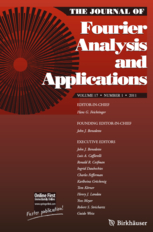 The classical sampling theorem has often been attributed
to E.T. Whittaker, but this attribution is not strictly valid.
One must carefully distinguish, for example, between the
concepts of sampling and of interpolation, and we find that
Whittaker worked in interpolation theory, not sampling theory.
Again, it has been said that K. Ogura was the first to give a
properly rigorous proof of the sampling theorem. We find that
he only indicated where the method of proof could be found; we
identify what is, in all probability, the proof he had in mind.
Ogura states his sampling theorem as a "converse of
Whittaker’s theorem", but identifies an error in
Whittaker’s work. In order to study these matters in detail
we find it necessary to make a complete review of the famous
1915 paper of E.T. Whittaker, and two not so well known papers
of Ogura dating from 1920. Since the life and work of Ogura is
practically unknown outside Japan, and there he is usually
regarded only as an educationalist, we present a detailed
overview together with a list of some 70 papers of his which we
had to compile. K. Ogura is presented in the setting of
mathematics in Japan of the early 20th century. Finally,
because many engineering textbooks refer to Whittaker as a
source for the sampling theorem, we make a very brief review of
some early introductions of sampling methods in the engineering
context, mentioning H. Nyquist, K. Küpfmüller, V.
Kotel’nikov, H. Raabe, C.E. Shannon and I. Someya.
The classical sampling theorem has often been attributed
to E.T. Whittaker, but this attribution is not strictly valid.
One must carefully distinguish, for example, between the
concepts of sampling and of interpolation, and we find that
Whittaker worked in interpolation theory, not sampling theory.
Again, it has been said that K. Ogura was the first to give a
properly rigorous proof of the sampling theorem. We find that
he only indicated where the method of proof could be found; we
identify what is, in all probability, the proof he had in mind.
Ogura states his sampling theorem as a "converse of
Whittaker’s theorem", but identifies an error in
Whittaker’s work. In order to study these matters in detail
we find it necessary to make a complete review of the famous
1915 paper of E.T. Whittaker, and two not so well known papers
of Ogura dating from 1920. Since the life and work of Ogura is
practically unknown outside Japan, and there he is usually
regarded only as an educationalist, we present a detailed
overview together with a list of some 70 papers of his which we
had to compile. K. Ogura is presented in the setting of
mathematics in Japan of the early 20th century. Finally,
because many engineering textbooks refer to Whittaker as a
source for the sampling theorem, we make a very brief review of
some early introductions of sampling methods in the engineering
context, mentioning H. Nyquist, K. Küpfmüller, V.
Kotel’nikov, H. Raabe, C.E. Shannon and I. Someya.
 This article discusses the interplay between multiplex
signal transmission in telegraphy and telephony, and sampling
methods. It emphasizes the works of Herbert Raabe (1909-2004)
and Claude Shannon (1916-2001) and the context in which they
occurred. Attention is given to the role that the exceptional
research atmosphere in Berlin during the 1920s and early 1930s
played in the development of some of the ideas underlying these
works, first in Germany and then in the USA, as some of the
protagonists moved there. Raabe's thesis, published in 1939,
describes and analyses a time-division multiplex system for
telephony. In order to build his working prototype, Raabe had
to develop the theoretical tools he needed and achieved a
thorough understanding of sampling, including sampling with
pulses of finite duration and sampling of low-pass and
band-pass signals. His condition for reconstruction was known
as 'Raabe's condition' in the German literature of the time. On
the other hand, Shannon's works of 1948 and 1949 contain the
classical sampling theorem, but go much further and lay down
the abstract theoretical framework that underlies much of the
modern digital communications. It is interesting to compare
Raabe's very practical approach with Shannon's abstract work:
Raabe independently developed his methods to the degree he
needed, but his main purpose was to build a working prototype.
Shannon, on the other hand, approached sampling independently
of practical constraints, as part of information theory - which
became tremendously influential.
This article discusses the interplay between multiplex
signal transmission in telegraphy and telephony, and sampling
methods. It emphasizes the works of Herbert Raabe (1909-2004)
and Claude Shannon (1916-2001) and the context in which they
occurred. Attention is given to the role that the exceptional
research atmosphere in Berlin during the 1920s and early 1930s
played in the development of some of the ideas underlying these
works, first in Germany and then in the USA, as some of the
protagonists moved there. Raabe's thesis, published in 1939,
describes and analyses a time-division multiplex system for
telephony. In order to build his working prototype, Raabe had
to develop the theoretical tools he needed and achieved a
thorough understanding of sampling, including sampling with
pulses of finite duration and sampling of low-pass and
band-pass signals. His condition for reconstruction was known
as 'Raabe's condition' in the German literature of the time. On
the other hand, Shannon's works of 1948 and 1949 contain the
classical sampling theorem, but go much further and lay down
the abstract theoretical framework that underlies much of the
modern digital communications. It is interesting to compare
Raabe's very practical approach with Shannon's abstract work:
Raabe independently developed his methods to the degree he
needed, but his main purpose was to build a working prototype.
Shannon, on the other hand, approached sampling independently
of practical constraints, as part of information theory - which
became tremendously influential.
 It is shown that the Whittaker-Kotel’nikov-Shannon
sampling theorem of signal analysis, which plays the central
role in this article, as well as (a particular case) of
Poisson’s summation formula, the general Parseval formula and
the reproducing kernel formula, are all equivalent to one
another in the case of bandlimited functions. Here equivalent
is meant in the sense that each is a corollary of the other.
Further, the sampling theorem is equivalent to the
Valiron-Tschakaloff sampling formula as well as to the
Paley–Wiener theorem of Fourier analysis. An independent
proof of the Valiron formula is provided. Many of the
equivalences mentioned are new results. Although the above
theorems are equivalent amongst themselves, it turns out that
not only the sampling theorem but also Poisson's formula are in
a certain sense the 'strongest' assertions of the six
well-known, basic theorems under discussion.
It is shown that the Whittaker-Kotel’nikov-Shannon
sampling theorem of signal analysis, which plays the central
role in this article, as well as (a particular case) of
Poisson’s summation formula, the general Parseval formula and
the reproducing kernel formula, are all equivalent to one
another in the case of bandlimited functions. Here equivalent
is meant in the sense that each is a corollary of the other.
Further, the sampling theorem is equivalent to the
Valiron-Tschakaloff sampling formula as well as to the
Paley–Wiener theorem of Fourier analysis. An independent
proof of the Valiron formula is provided. Many of the
equivalences mentioned are new results. Although the above
theorems are equivalent amongst themselves, it turns out that
not only the sampling theorem but also Poisson's formula are in
a certain sense the 'strongest' assertions of the six
well-known, basic theorems under discussion.
 New extremal properties of Daubechies 4-tap orthonormal
filters are given: they maximize a certain functional, have the
largest gain in (0,pi), and allow maximum energy compaction in
(0,pi/2). These properties do not carry over to Daubechies
filters of arbitrary length. They complement what is known
about Daubechies filters and highlight the specific role of the
4-tap filter. Moreover, we demonstrate that these properties
cannot be fulfilled by any other orthonormal lowpass filter,
regardless of its length.
New extremal properties of Daubechies 4-tap orthonormal
filters are given: they maximize a certain functional, have the
largest gain in (0,pi), and allow maximum energy compaction in
(0,pi/2). These properties do not carry over to Daubechies
filters of arbitrary length. They complement what is known
about Daubechies filters and highlight the specific role of the
4-tap filter. Moreover, we demonstrate that these properties
cannot be fulfilled by any other orthonormal lowpass filter,
regardless of its length.
 This paper discusses the work of Herbert Raabe (1909-2004)
and its significance in terms of sampling. Raabe's thesis of
1939 is a milestone in the development of sampling: Raabe built
and analysed the first time-division multiplex system for
telephony, a task that required of him a thorough understanding
of sampling, including sampling with pulses of finite duration
and sampling of low-pass and band-pass signals. This paper
discusses his approach, its significance from the viewpoint of
sampling, the generality of its conclusions, and also the
milieu that lead to his remarkable achievements: the
exceptional research climate existing in Berlin at the time
Raabe worked. The paper also examines the connection between
Raabe's condition, the work of Harry Nyquist on
telegraphy and the so-called Nyquist rate. An English
translation of the sections of Raabe's dissertation more
closely related to sampling is included as an appendix.
This paper discusses the work of Herbert Raabe (1909-2004)
and its significance in terms of sampling. Raabe's thesis of
1939 is a milestone in the development of sampling: Raabe built
and analysed the first time-division multiplex system for
telephony, a task that required of him a thorough understanding
of sampling, including sampling with pulses of finite duration
and sampling of low-pass and band-pass signals. This paper
discusses his approach, its significance from the viewpoint of
sampling, the generality of its conclusions, and also the
milieu that lead to his remarkable achievements: the
exceptional research climate existing in Berlin at the time
Raabe worked. The paper also examines the connection between
Raabe's condition, the work of Harry Nyquist on
telegraphy and the so-called Nyquist rate. An English
translation of the sections of Raabe's dissertation more
closely related to sampling is included as an appendix.
 The advantages of B-splines for signal representation are
well known. This paper stresses a fact that seems to be less
well known, namely, the possibility of using linear
combinations of B-splines to obtain representations that are
more stable than the usual ones. We give the best possible
Riesz bounds for these linear combinations and calculate their
duals, in a generalized sampling context.
The advantages of B-splines for signal representation are
well known. This paper stresses a fact that seems to be less
well known, namely, the possibility of using linear
combinations of B-splines to obtain representations that are
more stable than the usual ones. We give the best possible
Riesz bounds for these linear combinations and calculate their
duals, in a generalized sampling context.
To put this into perspective, consider an approximation scheme based on a certain kernel function. Often, it would lead to a Riesz sequence or a Riesz basis. Riesz bases are a generalization of orthonormal bases, and can be regarded as the result of applying a bounded invertible operator to the elements of an orthonormal basis. A Riesz sequence, on the other hand is an ``incomplete basis'', as it is merely a Riesz basis for the closed linear span of the set of functions under consideration.
The numerical stability of such representations is important in practice, as it dictates the magnitude of the adverse effects due to noisy data. The stability of Riesz bases and Riesz sequences can be measured by looking at the size of their Riesz bounds. Orthonormal bases are perfect from the viewpoint of numerical stability, and their Riesz bounds are both equal to unity. As the ratio of the upper to the lower bound increases, the numerical stability of the representation decreases. It is well known that the tighter (closer to each other) these bounds are the less any small perturbations in the input data will be felt at the output. This paper points out that the Riesz bounds associated with bases built using certain linear combinations of B-splines are better from the stability point of view than bases directly based on B-splines.
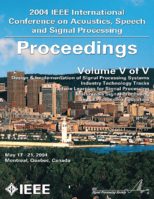 This paper deals with two-channel sampling using an
oversampled filter bank. It emphasizes sampling of one function
and its derivative, at a rate higher than the critical minimum
rate (oversampling), and the problem of reconstructing the
function even when a finite number of samples (of the function
or of its derivative) are unknown. The motivation for
considering this problem is the need to add redundancy to data,
as in conventional channel coding, and the convenience of doing
it in a domain suited to the data, as in joint source-channel
coding.
This paper deals with two-channel sampling using an
oversampled filter bank. It emphasizes sampling of one function
and its derivative, at a rate higher than the critical minimum
rate (oversampling), and the problem of reconstructing the
function even when a finite number of samples (of the function
or of its derivative) are unknown. The motivation for
considering this problem is the need to add redundancy to data,
as in conventional channel coding, and the convenience of doing
it in a domain suited to the data, as in joint source-channel
coding.
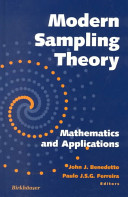 This book focuses on recent mathematical methods and
theoretical developments, as well as some current central
applications of Shannon sampling. The sampling theorem,
originated in the 19th century, is often associated with the
names of Shannon, Kotel'nikov, and Whittaker; and one of the
features of this book is an English translation of the
pioneering work in the 1930s by Kotel'nikov, a Russian
engineer. Includes a wide and coherent range of mathematical
ideas essential for modern sampling techniques. These ideas
involve wavelets and frames, complex and abstract harmonic
analysis, the Fast Fourier Transform (FFT), and special
functions and eigenfunction expansions. Some of the
applications addressed are tomography and medical imaging.
This book focuses on recent mathematical methods and
theoretical developments, as well as some current central
applications of Shannon sampling. The sampling theorem,
originated in the 19th century, is often associated with the
names of Shannon, Kotel'nikov, and Whittaker; and one of the
features of this book is an English translation of the
pioneering work in the 1930s by Kotel'nikov, a Russian
engineer. Includes a wide and coherent range of mathematical
ideas essential for modern sampling techniques. These ideas
involve wavelets and frames, complex and abstract harmonic
analysis, the Fast Fourier Transform (FFT), and special
functions and eigenfunction expansions. Some of the
applications addressed are tomography and medical imaging.
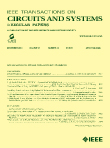 This paper explores the connections between nonuniform
sampling of a certain function and the almost periodic
extension of its Fourier transform. It shows that the Fourier
transform of a band-limited function can be extended (as a
weighted sum of translates) as a Stepanoff almost periodic
function to the whole frequency axis. This result leads to a
generalized nonuniform sampling theorem which, unlike previous
results, does not require the continuity of the Fourier
transform of the sampled function, and is valid for
finite-energy band-limited functions.
This paper explores the connections between nonuniform
sampling of a certain function and the almost periodic
extension of its Fourier transform. It shows that the Fourier
transform of a band-limited function can be extended (as a
weighted sum of translates) as a Stepanoff almost periodic
function to the whole frequency axis. This result leads to a
generalized nonuniform sampling theorem which, unlike previous
results, does not require the continuity of the Fourier
transform of the sampled function, and is valid for
finite-energy band-limited functions.
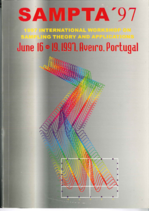 The SampTA'97
Workshop took place in Aveiro, in 1997, and the Proceedings
volume contains 84 papers (the complete list of papers is
available). To obtain the volume contact the editor. For other
related publications, see the section on Frames, codes and reconstruction, the
section on Missing samples, and the section on
Shannon sampling.
The SampTA'97
Workshop took place in Aveiro, in 1997, and the Proceedings
volume contains 84 papers (the complete list of papers is
available). To obtain the volume contact the editor. For other
related publications, see the section on Frames, codes and reconstruction, the
section on Missing samples, and the section on
Shannon sampling.
 This paper shows that the approximation error computed
between a smoothed version of the signal (with an ideal
low-pass filter of band-width 2w) and a nonuniform sampling
approximation of the signal based on the sinc kernel is O(w log
w / N) in the sup norm. See also the section
Approximation and coding.
This paper shows that the approximation error computed
between a smoothed version of the signal (with an ideal
low-pass filter of band-width 2w) and a nonuniform sampling
approximation of the signal based on the sinc kernel is O(w log
w / N) in the sup norm. See also the section
Approximation and coding.
 This paper studies the eigenvalues of a matrix that arises
in the recovery of lost samples from oversampled band-limited
signals. Emphasis is placed on the variation of the eigenvalues
as a function of the distribution of the missing samples and as
a function of the oversampling parameter. The paper presents a
number of results which help to understand the numerical
difficulties that may occur in this class of problems, and ways
to circumvent them. If you are interested in the discrete,
finite-dimensional version of this problem, in which the
Fourier transform is replaced by the DFT, see the paper
The eigenvalues of matrices that occur in certain interpolation problems.
This paper studies the eigenvalues of a matrix that arises
in the recovery of lost samples from oversampled band-limited
signals. Emphasis is placed on the variation of the eigenvalues
as a function of the distribution of the missing samples and as
a function of the oversampling parameter. The paper presents a
number of results which help to understand the numerical
difficulties that may occur in this class of problems, and ways
to circumvent them. If you are interested in the discrete,
finite-dimensional version of this problem, in which the
Fourier transform is replaced by the DFT, see the paper
The eigenvalues of matrices that occur in certain interpolation problems.
 It is well known that a bandlimited oversampled signal is
completely determined even if an arbitrary finite number of
samples is lost. This paper gives (i) an alternative simple
proof of this fact (ii) shows that it carries over to
generalized sampling expansions. More precisely, it is shown
that any finite number of missing samples can be recovered from
the remaining ones, in the case of generalized Kramer sampling
expansions, if an appropriate oversampling constraint is
satisfied. The recovery can be accomplished either iteratively
or noniteratively.
It is well known that a bandlimited oversampled signal is
completely determined even if an arbitrary finite number of
samples is lost. This paper gives (i) an alternative simple
proof of this fact (ii) shows that it carries over to
generalized sampling expansions. More precisely, it is shown
that any finite number of missing samples can be recovered from
the remaining ones, in the case of generalized Kramer sampling
expansions, if an appropriate oversampling constraint is
satisfied. The recovery can be accomplished either iteratively
or noniteratively.